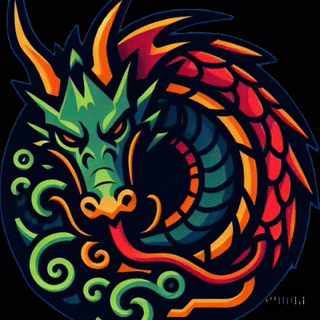The Hierarchy of Hindu Gods: A Detailed Exploration
Introduction
Hinduism, one of the world's oldest religions, is often described as polytheistic, but it encompasses a vast and complex theological structure. The Hindu pantheon is arranged in a hierarchical manner, with supreme deities, celestial beings, and regional and family gods playing different roles in the spiritual framework. This paper explores the hierarchy of Hindu gods, providing insights for general readers and college students interested in Hindu religious studies.
The Supreme Reality: Brahman
At the highest level of Hindu theological hierarchy is Brahman, the ultimate, formless, and eternal cosmic principle. Brahman is beyond human comprehension and is described as Sat (truth), Chit (consciousness), and Ananda (bliss). The Vedas and Upanishads emphasize that all other deities are manifestations of this singular divine essence.
The Trimurti: The Holy Trinity
The Hindu trinity, or Trimurti, consists of three principal deities who represent different aspects of the cosmic functions:
Brahma (The Creator): He is responsible for creation and is depicted with four heads symbolizing the four Vedas. However, his worship is limited in modern Hinduism.
Vishnu (The Preserver): Vishnu maintains cosmic balance and is worshipped in various forms, including his ten incarnations (Dashavatara) such as Rama and Krishna.
Shiva (The Destroyer and Transformer): Shiva is associated with destruction and regeneration, signifying the cyclical nature of the universe.
The Devi: The Divine Feminine
Parallel to the Trimurti, Devi or Shakti represents the feminine aspect of divinity. She manifests in various forms:
Durga: The warrior goddess who combats evil forces.
Lakshmi: The goddess of wealth and prosperity.
Saraswati: The goddess of wisdom and arts.
Parvati: The consort of Shiva and the mother of Ganesha and Kartikeya.
Secondary Deities and Avatars
In addition to the supreme deities, Hinduism recognizes many gods who play important roles:
Ganesha: The elephant-headed god of wisdom and remover of obstacles.
Hanuman: The monkey god and devotee of Rama, symbolizing devotion and strength.
Kartikeya: The god of war, worshipped primarily in South India.
Surya (Sun God): An important deity representing the cosmic light and energy.
Celestial Beings and Demigods
Hindu cosmology includes numerous celestial beings who assist in the maintenance of the universe:
Indra: The king of the gods and ruler of Svarga (heaven).
Agni: The fire god, a key figure in Vedic rituals.
Varuna: The god of cosmic order and the oceans.
Yama: The god of death and dharma.
Regional and Folk Deities
Hinduism is highly diverse, and different regions have their own deities who are deeply integrated into local cultures. Some examples include:
Vithoba (Maharashtra)
Ayyappa (Kerala)
Jagannath (Odisha)
Murugan (Tamil Nadu)
Philosophical Perspectives on Hierarchy
While a structured hierarchy exists, many Hindu traditions, such as Advaita Vedanta, emphasize the non-dualistic nature of reality, where all deities are seen as different aspects of the same divine essence. The Bhakti movement encourages personal devotion (bhakti) to a chosen deity, further diversifying the understanding of hierarchy.
Suggested Further Reading
For those interested in further study, the following scholarly works are recommended:
Flood, Gavin. An Introduction to Hinduism. Cambridge University Press, 1996. https://www.cambridge.org
Zimmer, Heinrich. Myths and Symbols in Indian Art and Civilization. Princeton University Press, 1946. https://press.princeton.edu
Eck, Diana L. Darśan: Seeing the Divine Image in India. Columbia University Press, 1998. https://cup.columbia.edu
Conclusion
The hierarchy of Hindu gods reflects the richness and complexity of Hindu religious thought. From the supreme Brahman to the multitude of personal and regional deities, this structure provides devotees with various paths to spiritual realization. Understanding this hierarchy enhances appreciation for one of the most intricate religious traditions in human history.
480-366-3550 (Domain Sales)
© SDBEST LLC, 2025. All rights reserved.
Sponsorship Disclosure
Terms of Service
